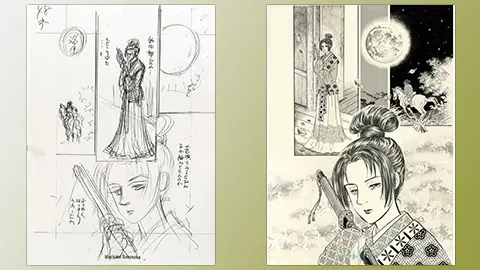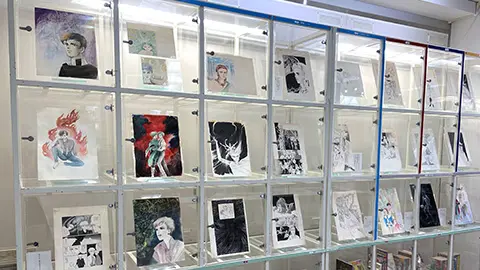VOL.195 AUGUST 2024
EXPLORE THE UNIQUE CHARM OF MANGA IN JAPAN
Yokote Masuda Manga Museum: First Museum in Japan Devoted to Original Manga Illustrations
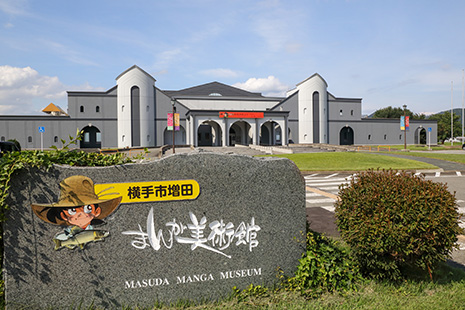
Photo: ISHIZAWA Yoji
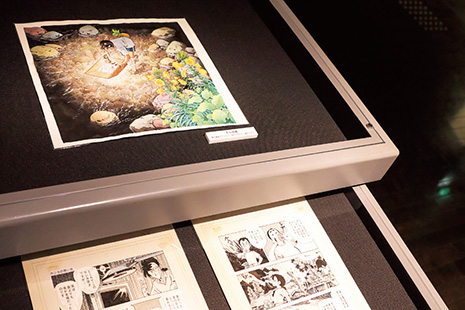
Photo: ISHIZAWA Yoji
The Yokote Masuda Manga Museum in Akita Prefecture has a collection of manga genga (original illustrations) drawn by nearly 100 manga artists on permanent display where visitors can view them up close. This article introduces this special museum, the first in Japan to feature a manga genga theme.
Akita Prefecture is situated along the Sea of Japan in Japan’s Tohoku region. Yokote, a city famous for kamakura* snow domes in winter, is located in the southeast of the prefecture. In 2005, seven surrounding towns and villages, including the town of Masuda-machi, were merged into Yokote City. The Yokote Masuda Manga Museum, located in Yokote City, opened in 1995 as part of a project commemorating the 100th anniversary of Masuda-machi’s establishment, before the merger. OOHINATA Reina, who oversees public relations at the museum, looks back at how the museum came to be established.
“At the beginning, there was a plan to establish a YAGUCHI Takao Memorial Hall to recognize the achievements of YAGUCHI Takao,** a manga artist from Masuda-machi. YAGUCHI’s reaction was, ‘The manga that influenced me are works of pure art. I would love to convey that with exhibits of original genga artwork created by first-rate manga artists. His suggestion led to the establishment of this current museum featuring a theme of manga genga — the original illustrations.”
After its establishment, the museum attracted notice for its efforts to collect, preserve, and exhibit manga genga and was recognized as a pioneer on the national level. Later, after completing renovations to further enhance storage and exhibition functions for its genga collection, the museum reopened in 2019.
“Manga genga are the original drafts that have been drawn as hanshita*** artwork layout pages to be used in printing the manga in magazines, book form, and so on. Originally, not much value was placed on the genga themselves, actually. Individual manga artists would carefully store their own as pieces of art they had put their heart and soul into creating. In recent years, manga has come to be highly regarded throughout the world, yet here in Japan, there still has not been a particular value assigned to original genga illustrations. The situation surrounding them has many risks: they may get discarded or scattered to various locations, even overseas, and some will ultimately be lost.”
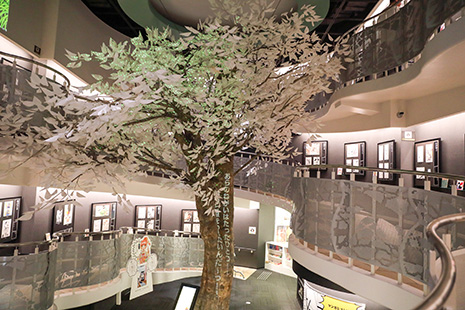
Photo:ISHIZAWA Yoji
OOHINATA warns of the crisis, saying that the loss of the original drawings, which are the foundation of Japanese manga culture, would essentially lead to the loss of Japanese culture itself.
“The museum has put a lot of effort into collecting and preserving genga since it first opened in 1995. We currently have a collection of over 480,000 genga, and we still receive many requests for genga to be added to our collections. That led us to establish the Manga Genga Archive Center under a commission from the Agency for Cultural Affairs, providing the only consultation service regarding the collection and storage of manga genga in Japan. Besides offering consultation about storing genga, we also engage in projects concerning temporary genga storage in cooperation with other similar facilities and institutions.”

Photo: ISHIZAWA Yoji
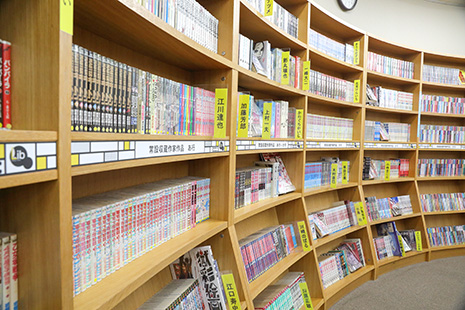
Photo: ISHIZAWA Yoji
OOHINATA says, “While visitors to the museum from overseas are still relatively limited in number, sometimes fans of certain artists or works of manga will make the trip here, and we can see how impressed they are by the magnificence of the genga.”
“Genga have such impact and beauty in ways that just cannot be matched by the printed forms one ordinarily sees in books and other publications, not limited to the color and monochrome versions. I think visitors from overseas will experience the unique ways genga convey the creativity and passion the artists put into the work. When lovers of manga visit Japan, I hope they will make the trip here to the museum for the opportunity to view genga up close. They will appreciate the distinctive frame layouts, as well as the delicate and beauty of the artwork with the way it expresses emotions and the feel of the scenes so realistically.”

Exhibits in the Manga Culture Exhibition Room feature arrangements inspired by manga frame layouts. A smartphone-based multilingual audio guide (in Japanese, English, and Chinese) is partially available in places.
Photo: ISHIZAWA Yoji
* Snow domes about 3 m in height called kamakura are created for an event held every February in Yokote City to honor Suijin, the god of water. About 60 kamakura are made in the city, offered as prayers for family safety, business success, abundant crops, and so on.
** Japanese manga artist and essayist. His work featured themes depicting life in nature, with his representative works Fisherman Sanpei (Tsurikichi Sanpei) and The Mysterious Wonder Snake Bachihebi (Maboroshi no Kaija Bachihebi) sparking interest in fishing and the tsuchinoko, a mythical, snake-like creature.
*** Completed Draft artwork for use in platemaking, a pre-press stage in the printing process.
By MOROHASHI Kumiko
Photo: ISHIZAWA Yoji
